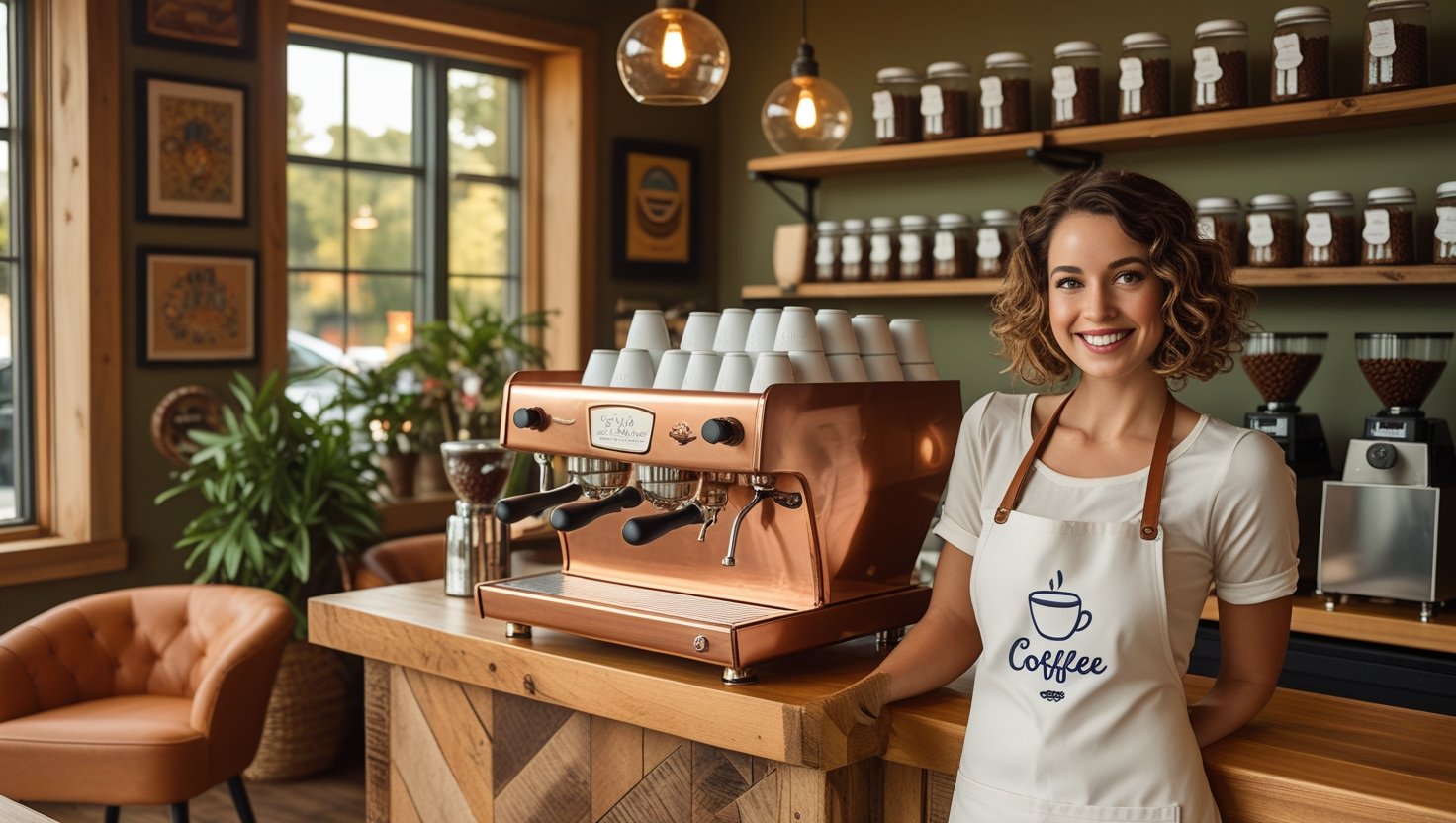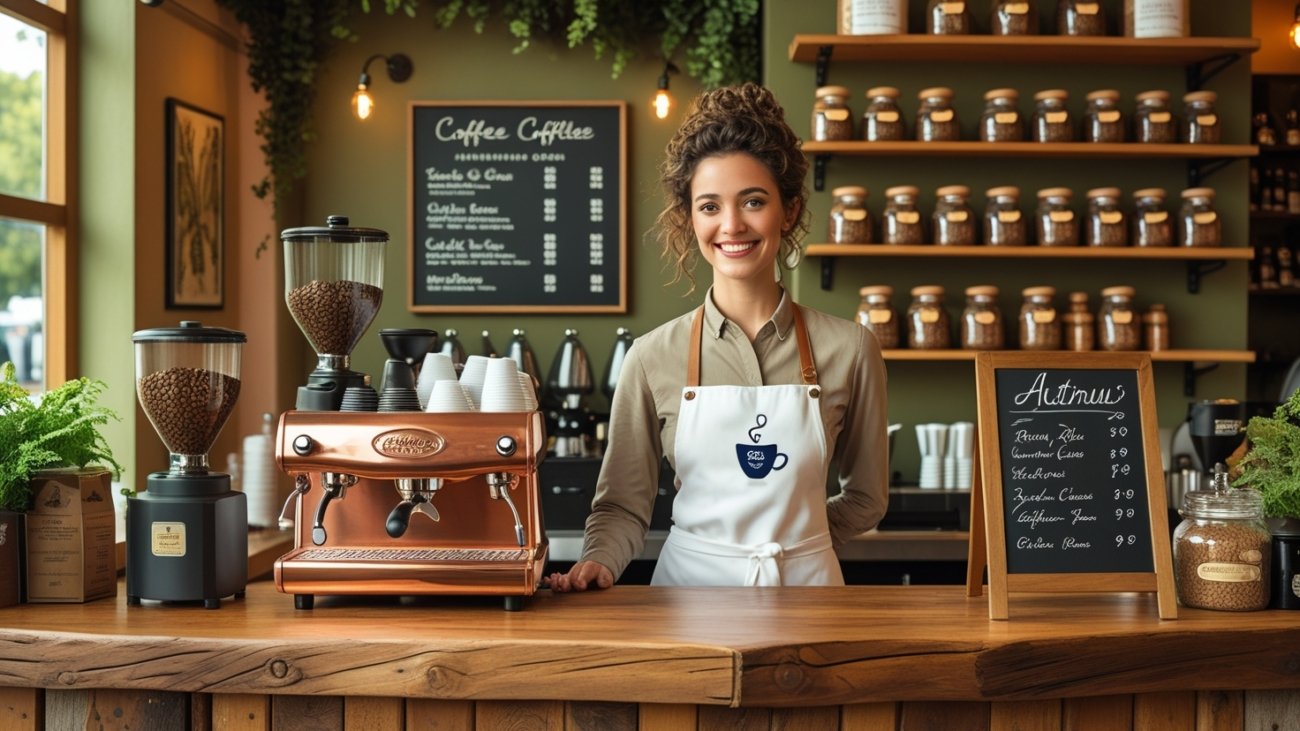
Dreaming of opening your own cozy café where people gather over delicious coffee?
Starting a coffee shop can be incredibly rewarding—but it requires careful planning, passion, and attention to detail.
This step-by-step guide breaks down everything you need to know, from initial concept to opening day and beyond.
Step 1: Define Your Coffee Shop Concept
Before anything else, decide what makes your café unique.
Choose Your Niche:
Specialty Coffee Shop (High-quality, artisanal brews)
Drive-Thru Coffee Stand (Quick service, high volume)
Café + Bakery (Fresh pastries & desserts)
Themed Coffee Shop (Book café, cat café, retro vibe)
Mobile Coffee Cart (Low-cost, flexible location)
Key Questions to Answer:
- Who is your target customer? (Students, professionals, tourists?)
- What will your signature drink be?
- Will you focus on takeaway, dine-in, or both?
Step 2: Research & Write a Business Plan
A solid business plan keeps you on track and helps secure funding.
Key Sections to Include:
Executive Summary (Mission, vision, goals)
Market Analysis (Competitors, customer demand)
Menu & Pricing Strategy
Startup Costs & Financial Projections
Marketing Plan (Social media, loyalty programs)
Pro Tip: Use free templates from SCORE or the SBA (Small Business Administration).
Step 3: Calculate Your Budget & Secure Funding
Estimated Startup Costs:
- Low-end (Small kiosk): $50,000 – $100,000
- Mid-range (Standard café): $100,000 – $250,000
- High-end (Premium location + full kitchen): $250,000+
Funding Options:
Personal Savings
Small Business Loan (SBA, banks)
Investors or Partnerships
Crowdfunding (Kickstarter, Indiegogo)
Pro Tip: Always keep 3-6 months of operating cash as backup.
Step 4: Find the Perfect Location
Location can make or break your coffee shop.
What to Look For:
High Foot Traffic (Near offices, colleges, shopping areas)
Affordable Rent (Max 10-15% of projected revenue)
Parking & Accessibility
Competitor Proximity (Too close = bad, but a coffee cluster can attract more customers)
Bonus: Check local zoning laws before signing a lease!
Step 5: Get Licenses, Permits & Legal Setup
Must-Have Legal Requirements:
Business License (City/County)
Food Service Permit (Health Department)
Seller’s Permit (For sales tax)
Employer ID (EIN) (IRS, if hiring employees)
Music License (If playing copyrighted music)
Pro Tip: Hire a business attorney to avoid legal mistakes.
Step 6: Design Your Coffee Shop Layout
Key Areas to Plan:
Front Counter (POS system, espresso machine)
Seating (Cozy chairs, bar stools, outdoor patio?)
Kitchen/Prep Area (If serving food)
Storage (Coffee beans, milk, supplies)
Design Tip: Use warm lighting, wood accents, and greenery for a welcoming vibe.
Step 7: Buy Equipment & Supplies
Essential Coffee Shop Equipment:
Espresso Machine ($3,000 – $20,000)
Commercial Grinder ($500 – $2,000)
Brewing Equipment (Pour-over, French press, cold brew system)
Refrigerator & Ice Machine
POS System (Square, Toast, Clover)
Cups, Lids, Napkins, Stirrers
Pro Tip: Buy used equipment from restaurant auctions to save money.
Step 8: Source High-Quality Coffee Beans & Ingredients
Where to Buy Coffee Beans:
Local Roasters (Fresher, supports small businesses)
Wholesale Suppliers (Cost-effective bulk orders)
Direct Trade (Ethical sourcing from farmers)
Bonus: Offer multiple roast options (Light, medium, dark).
Step 9: Hire & Train Your Team
Key Staff Roles:
👩🍳 Baristas (2-3 for shifts)
👨💼 Manager (Handles operations, orders, staff)
🧑🍳 Baker/Cook (If serving food)
Training Tip: Teach staff about coffee brewing methods, customer service, and latte art.
Step 10: Create a Killer Menu
Must-Have Coffee Menu Items:
Espresso, Americano, Cappuccino, Latte
Cold Brew & Iced Coffee
Specialty Drinks (Matcha latte, caramel macchiato)
Snacks (Pastries, sandwiches, avocado toast?)
Pro Tip: Start with a small, high-quality menu—expand later.
Step 11: Market Your Coffee Shop Before Opening
Pre-Launch Marketing Strategies:
Social Media Teasers (Instagram, TikTok, Facebook)
Local Influencer Collaborations
Grand Opening Event (Free samples, live music)
Loyalty Program (Buy 10 coffees, get 1 free)
Pro Tip: Offer a “Soft Opening” to friends & family for feedback.
Step 12: Open & Optimize Operations
First 30 Days Checklist:
Track Sales & Customer Feedback
Adjust Menu Based on Popular Items
Engage with Customers (Ask for reviews, build community)
Refine Staff Training (Speed, efficiency, friendliness)
Growth Tip: Introduce seasonal drinks (Pumpkin spice, peppermint mocha).
Final Thought: Your Coffee Shop Dream is Possible!
Starting a coffee shop takes hard work, passion, and smart planning—but with this guide, you’re already ahead.


webpage https://binslist.com
маркетплейс аккаунтов https://birzha-akkauntov-online.ru/
перепродажа аккаунтов маркетплейс аккаунтов соцсетей
платформа для покупки аккаунтов маркетплейс аккаунтов
продажа аккаунтов биржа аккаунтов
Social media account marketplace Website for Buying Accounts
Profitable Account Sales Account Catalog
Account Exchange Service Account Selling Platform
Ready-Made Accounts for Sale Secure Account Sales
Sell Account Account exchange
Account Buying Service Account Catalog
Online Account Store Website for Buying Accounts
account marketplace social media account marketplace
buy pre-made account accounts for sale
sell account account store
verified accounts for sale sell accounts
sell accounts verified accounts for sale
secure account purchasing platform ready-made accounts for sale
account acquisition account trading platform
guaranteed accounts database of accounts for sale
accounts for sale account market
account trading platform account trading platform
account acquisition ready-made accounts for sale
account purchase account trading platform
buy accounts account market
secure account purchasing platform sell account
account sale account market
website for buying accounts account buying platform
account catalog https://accounts-marketplace.xyz/
guaranteed accounts https://accounts-marketplace.live
sell account https://social-accounts-marketplace.xyz
account selling service https://buy-accounts-shop.pro/
gaming account marketplace https://accounts-marketplace.art
sell account https://social-accounts-marketplace.live/
account purchase https://accounts-marketplace-best.pro
биржа аккаунтов akkaunty-na-prodazhu.pro
продажа аккаунтов https://kupit-akkaunt.xyz
продажа аккаунтов akkaunt-magazin.online
биржа аккаунтов https://akkaunty-market.live
магазин аккаунтов akkaunty-optom.live
маркетплейс аккаунтов соцсетей https://online-akkaunty-magazin.xyz
магазин аккаунтов kupit-akkaunt.online
cheap facebook account buy accounts facebook
buy fb account https://buy-ads-account.click
buy facebook account https://ad-account-buy.top
buying fb accounts https://ad-account-for-sale.top
facebook account buy facebook ad accounts for sale
buy aged google ads accounts buy google ads verified account
buy google agency account buy google ads invoice account
buy google ads threshold accounts https://buy-ads-agency-account.top
buy aged google ads accounts buy verified google ads account
google ads agency account buy buy google ad account
verified business manager for sale https://buy-business-manager-acc.org/
buy facebook business account https://buy-bm-account.org/
facebook business manager buy business-manager-for-sale.org
facebook business account for sale https://buy-business-manager-verified.org
buy facebook verified business account https://verified-business-manager-for-sale.org
buy tiktok business account https://tiktok-ads-account-buy.org
buy tiktok ads account https://tiktok-agency-account-for-sale.org
buy tiktok ads account https://buy-tiktok-ads-accounts.org
tiktok agency account for sale https://buy-tiktok-business-account.org
tiktok agency account for sale https://buy-tiktok-ads.org
buy tiktok ads account https://tiktok-ads-agency-account.org